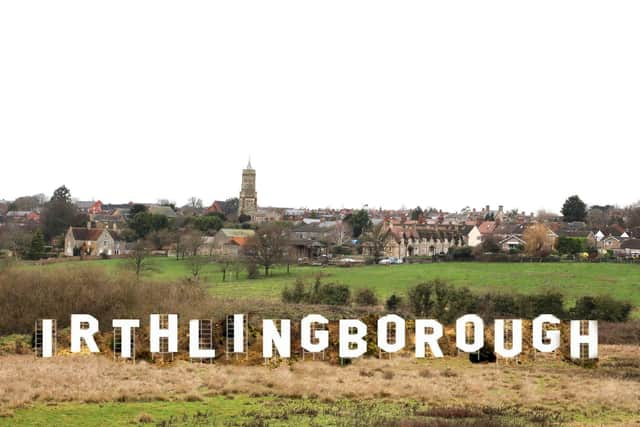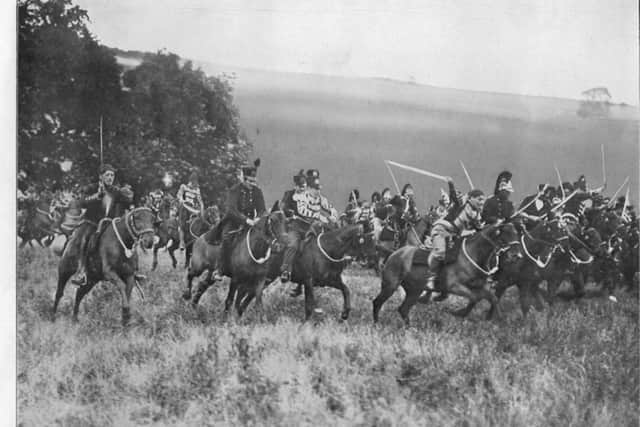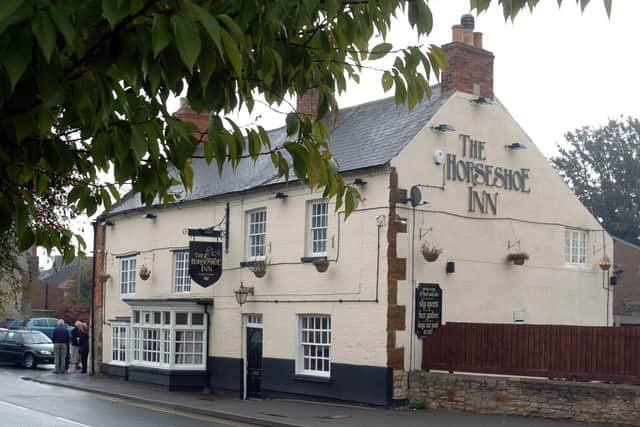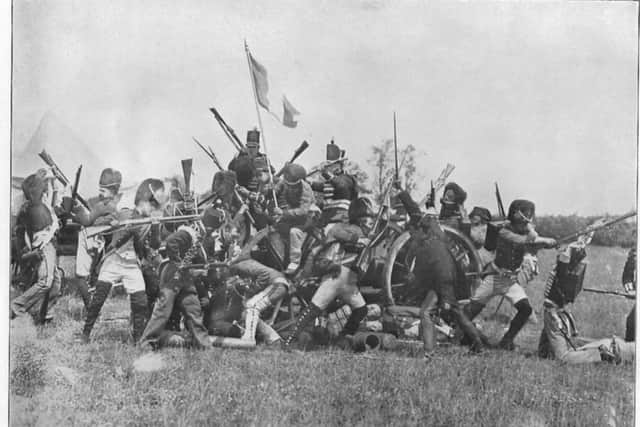Hooray for Irthlingborough! How sleepy shoe town nearly became Hollywood
and live on Freeview channel 276
Have you heard of The Battle of Irthlingborough? It must be one of the most pleasant battles in history, for not a life was lost, and only three soldiers were wounded, and then, quite accidently.
The battle, fought in June 1913, was the brainchild of Charles Weston, a film director and producer, put up at the Horseshoe Inn in High Street.
Advertisement
Hide AdAdvertisement
Hide AdAs he looked around the countryside surrounding the Nene Valley town, he thought that the landscape was similar to the terrain over which the Battle of Waterloo had been fought 98 years earlier.


Indeed, the Duke of Wellington himself on one of his regular stays with friends in Woodford, four miles from the town, had expressed the same opinion - now marked by a roundhouse enscribed 1815 and known locally as General's Corner.
Mr Weston decided to make use of this scenery for a motion picture, and when he was asked to produce The Battle of Waterloo for the British & Colonial Kinematograph Company he settled on Irthlingborough as the location for the battle scenes.
With a £6,000 budget, the film company was to stage full-blooded sequences of cavalry charges, infantry fighting among the farm buildings and artillerymen working their old-fashioned cannon.
Advertisement
Hide AdAdvertisement
Hide AdThe 12th Lancers stationed at Northampton's Weedon Barracks were permitted by the War Office to take part and rode into Irthlingborough. They were billeted in the skating rink.


Old cabs and wagons were bought up and the props department took off the wheels and axles, which were then used as mountings for the cannon. Scores of horses and hundreds of period costumes were acquired and extras were hired to play the part of additional troops.
Just before filming 'Napoleon’s' coach arrived in time for the battle. Dead horses from a Rushden knacker’s yard were strewn about the field.
Leading roles were played by London professionals, but one local man, Jack Inward, son of the licensee of the Horseshoe Inn and brother-in-law to Mr Weston, was chosen to play the part of aid-de-camp of the Duke of Wellington.
Advertisement
Hide AdAdvertisement
Hide AdOn the morning of the first day the actors, 100 Lancers from Weedon Barracks, more than 300 unemployed men sent from Northampton Labour Exchange and local shoe workers - who had been promised seven and six pence a day - gathered in High Street and were rapidly converted into Prussian, English and French troops with appropriate uniforms.


Those extras who could ride a horse, or brought their own, were immediately promoted to the rank of officer. Over the three days of filming the scenes in the town crowds of interested onlookers grew larger and larger.
So realistic was the 'fighting' that one soldier had two ribs broken, another smashed his ankle while the third had his hand partly shattered by an explosion.
Onlookers 'roared' with laughter at the spectacle of the film's producer, in a check cap, shouting instructions through a megaphone at the leading men playing Wellington, Napoleon and Blucher. The amateur actors fighting at close quarters enjoyed themselves so much that casualties forgot to die and dead men got up after a few moments and carried on with the fight. The slower horses were geed-up by a man wielding a large stick off camera.
Advertisement
Hide AdAdvertisement
Hide AdBefore the second day’s filming the director called all the extras together and said that all men who died yesterday were to die again today, but to 'put a little more life into it'.


Film production affected shoe factories because so many men missed their shifts. In retaliation, two shoe firms closed for the rest of the week resulting in about 1,000 men and women receiving no wages. Pubs in the town however were doing a roaring trade and they ran out of beer.
The Battle of Waterloo had its first showing at The Palladium, Argyll Street, London, before going on national release and became a forerunner of several pictures for which scenes were shot in and around Irthlingborough.
No further movies were made in Irthlingborough after 1914 due to the outbreak of war and film-makers looked for an alternative location. They decided upon a suburb of Los Angeles and the rest, as they say, is history.
For further information please click here to visit Irthlingborough Historical Society's website and click here for their Facebook page.
Adapted from an orginal article by Roy York.